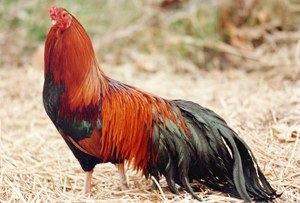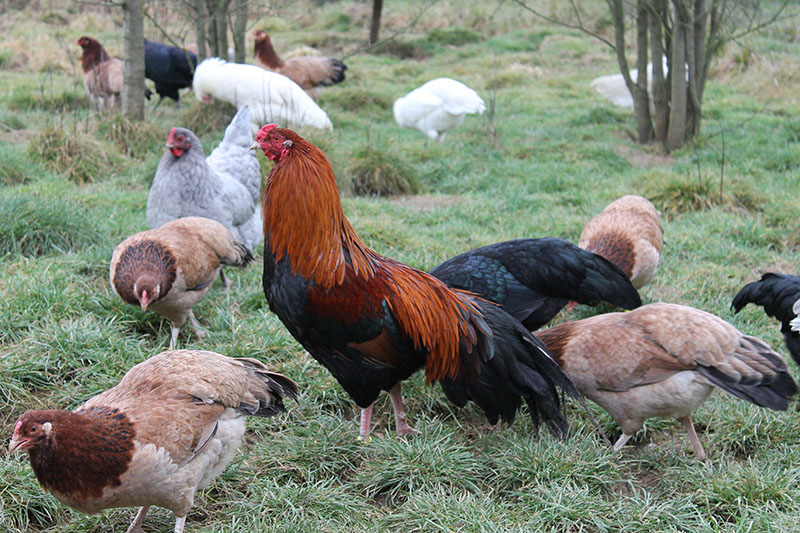Cubalaya Chickens
 The Cubalayas origins sound just like its name, Cuba. This fowl of created around
the 19th century. The Cubalaya is thought to be developed from Asian stock, possibly
from either the Philippine or Indonesian. It was brought to the United States in the
late 1930’s.
The Cubalayas origins sound just like its name, Cuba. This fowl of created around
the 19th century. The Cubalaya is thought to be developed from Asian stock, possibly
from either the Philippine or Indonesian. It was brought to the United States in the
late 1930’s.
Characteristics
The Cubalaya is a medium sized fowl with pea combs, red wattle and earlobes. The Cubalaya
have short legs with a sloping back. On the hen, there is a distinct difference between
the color of the plumage around the head and neck area and the rest of the body. On
both the male and female, the tail is curved down, giving what is known as a “lobster
tail” impression. The plumage of the male is brilliantly more colorful than the female
with sometimes a fire like reddish orange and emerald colored feathers. This bird
is adaptable to hot weather. A notable feature for the  Cubalaya is the lack of spurs on the feet. Their personality is friendly towards humans
unless taught otherwise.
Cubalaya is the lack of spurs on the feet. Their personality is friendly towards humans
unless taught otherwise.
Standard Weights
Cock: 6 lbs
Hen: 4 lbs
Bantam Cock: 26 oz
Bantam Hen: 22 oz
Varieties
Black-breasted red, white, black.
Egg Shell Color
White.
Uses
The Cubalaya is used for eggs and meat. They are also used for ornamental purposes. They are beautiful Chickens, especially the males.
References
Dr. Joe Berry, Extension Poultry Specialist, Department of Animal Science, Oklahoma State University
Chicken Breeds and Varieties (A2880), John L. Skinner, University of Wisconsin-Madison
"Cubalaya Chicken." The Livestock Conservancy. The Livestock Conservancy, n.d. Web. 23 June 2015.
Ekarius, Carol. "Chickens: Cubalaya." Pocketful of Poultry: Chickens, Ducks, Geese, Turkeys. North Adams, MA: Storey Pub., 2007. 58-61. Print.
Lewis, Celia. "Breed Profiles: Cubalaya." The Illustrated Guide to Chickens: How to Choose Them, How to Keep Them. New York: Skyhorse Pub., 2011. 78. Print.
